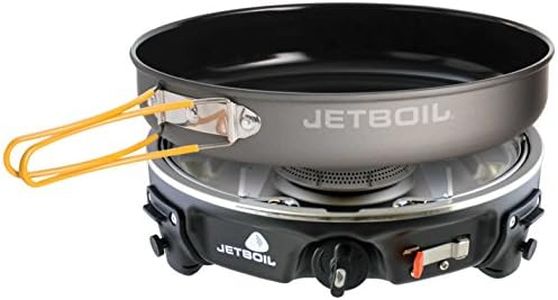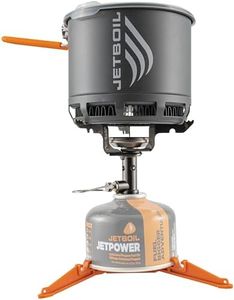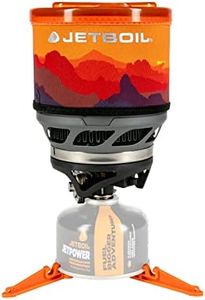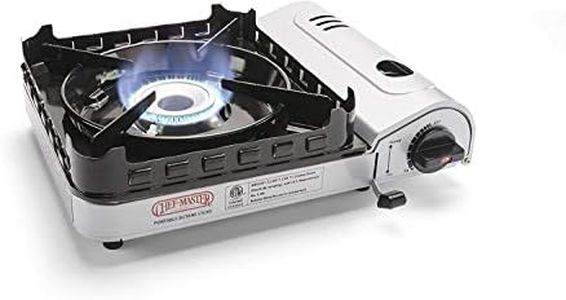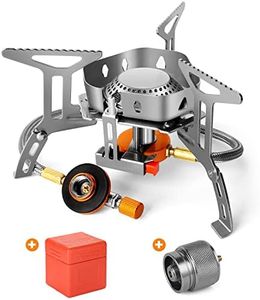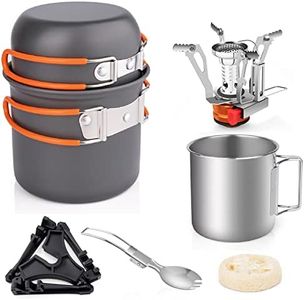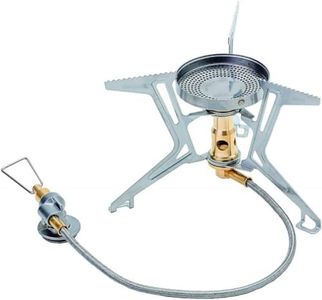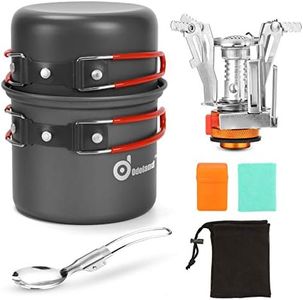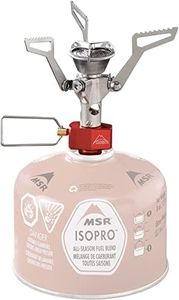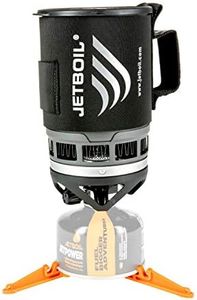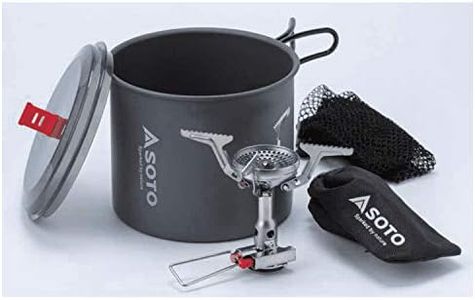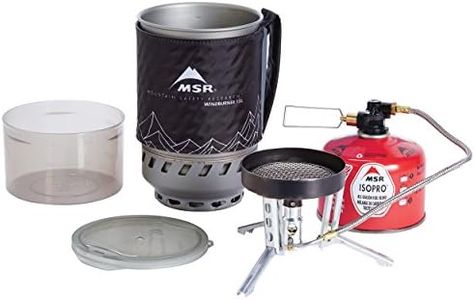We Use CookiesWe use cookies to enhance the security, performance,
functionality and for analytical and promotional activities. By continuing to browse this site you
are agreeing to our privacy policy
10 Best Backpacking Stoves
From leading brands and best sellers available on the web.Buying Guide for the Best Backpacking Stoves
Choosing the right backpacking stove is all about matching your cooking needs, trip style, and the environments you’ll be exploring. A good stove should be reliable, easy to use, and suitable for the types of meals you want to prepare. Think about how many people you’ll be cooking for, the kind of food you like to eat on the trail, and the conditions you expect to encounter. By understanding the key features of backpacking stoves, you can find one that makes your outdoor cooking experience enjoyable and hassle-free.Stove TypeStove type refers to the basic design and fuel system of the stove, such as canister, liquid fuel, alcohol, or solid fuel stoves. This is important because each type has its own strengths and weaknesses in terms of weight, convenience, and performance in different weather conditions. Canister stoves are quick and easy to use, making them great for most backpackers, while liquid fuel stoves work better in cold weather and at high altitudes. Alcohol and solid fuel stoves are lightweight and simple, but may be slower or less powerful. To pick the right one, consider where you’ll be hiking, how much weight you want to carry, and how simple you want your cooking setup to be.
Weight and PackabilityWeight and packability describe how heavy and bulky the stove is when packed in your backpack. This matters because every ounce counts when you’re carrying all your gear on your back. Ultralight stoves are best for solo hikers or those who want to move fast and light, while slightly heavier stoves may offer more stability or cooking options for groups. If you’re going on short trips or don’t mind a little extra weight for comfort, a larger stove might be fine. Always think about how much space you have in your pack and how much weight you’re comfortable carrying.
Fuel Efficiency and Boil TimeFuel efficiency is about how much fuel the stove uses to cook your meals, and boil time is how quickly it can bring water to a boil. These are important because efficient stoves save you fuel and weight, and faster boil times mean less waiting around, especially in bad weather. Some stoves are designed to be very efficient and fast, while others may use more fuel or take longer. If you want to minimize fuel weight or cook quickly, look for stoves with high efficiency and short boil times. If you’re not in a rush or cooking simple meals, this may be less critical.
Stability and Pot SupportStability and pot support refer to how well the stove holds your cooking pot and how steady it is on uneven ground. This is important for safety and ease of use, especially if you’re cooking with larger pots or on rough terrain. Small, lightweight stoves may be less stable, while larger stoves or those with wide bases offer better support. If you plan to cook for a group or use bigger pots, choose a stove with strong, wide pot supports. For solo trips with small pots, a compact stove may be enough.
Ease of Use and MaintenanceEase of use covers how simple the stove is to set up, light, and adjust, while maintenance is about how easy it is to keep the stove working well. This matters because you want a stove that won’t frustrate you after a long day of hiking. Some stoves are almost foolproof, while others require more steps or regular cleaning. If you’re new to backpacking or want a hassle-free experience, look for stoves that are easy to operate and require little maintenance. If you’re comfortable with gear and want more versatility, a more complex stove might be fine.
